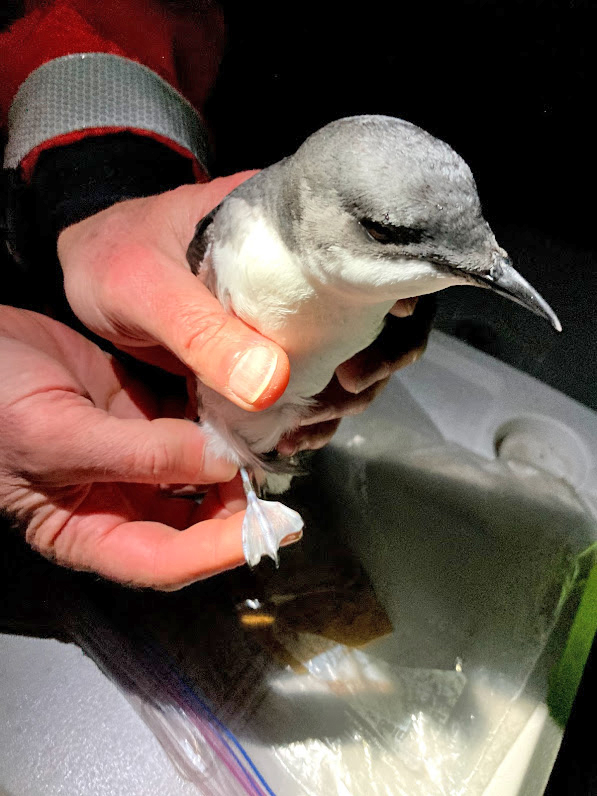Information being gathered about Scripps’s Murrelets on Catalina
By Jessica Boudevin
In January, Catalina Island Conservancy began seabird surveys for the elusive Scripps’s murrelet (Synthliboramphus scrippsi). This year’s survey looks a bit different. The Conservancy has expanded a collaboration with California Institute of Environmental Studies (CIES) for a longer period to try to determine the peak of breeding season.
“There are more than 200 wildlife species on Catalina,” said Conservancy Sr. Wildlife Biologist Emily Hamblen. “In order for us to make the most impact, we are engaging heavily with external collaborator for their assistance in the field.”
Nocturnal surveys will take place at regular intervals from January until June. Determining the peak of breeding enhances data and prevents artificial increases or decreases in population estimates due to counting at different points in the season. Many factors go into determining this peak, which is believed to be in February or March.
“We are collecting information on the phase of the moon, the strength and direction of the wind, ocean conditions, and more,” added Hamblen. “All of these things will combine to tell us when seabirds nest and why, helping us pinpoint when to gather data in the future so that we our management efforts can make the greatest impact.”
Currently, due to the locations of their burrows on slopes, Scripps’s murrelets are very susceptible to predation from rodents, cats and ravens.
In order to help combat this vulnerability, the Conservancy created 10 artificial nests last year in steeper, more remote locations that are more difficult for predators to access. Data from this year will begin to indicate whether the birds will choose these options for a safe place to nest.
“Our first overnight surveys this year did not see many birds, which is actually a great thing,” Hamblen explained. “It means we are ahead of nesting this year and will be able to collect data throughout the breeding season.”
Not much is known about these yearly visitors, which are listed as Threatened by the California Endangered Species Act. It is difficult to study Scripps’s murrelets as they spend most of their life at sea, only venturing onto land during nesting. Information collected about these incredible seafarers will be shared with CEIS and will help indicate steps to better protect and manage Scripps’s murrelets.











